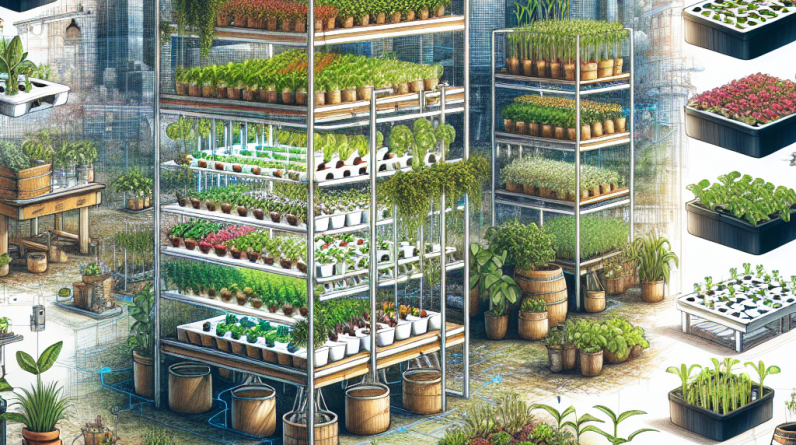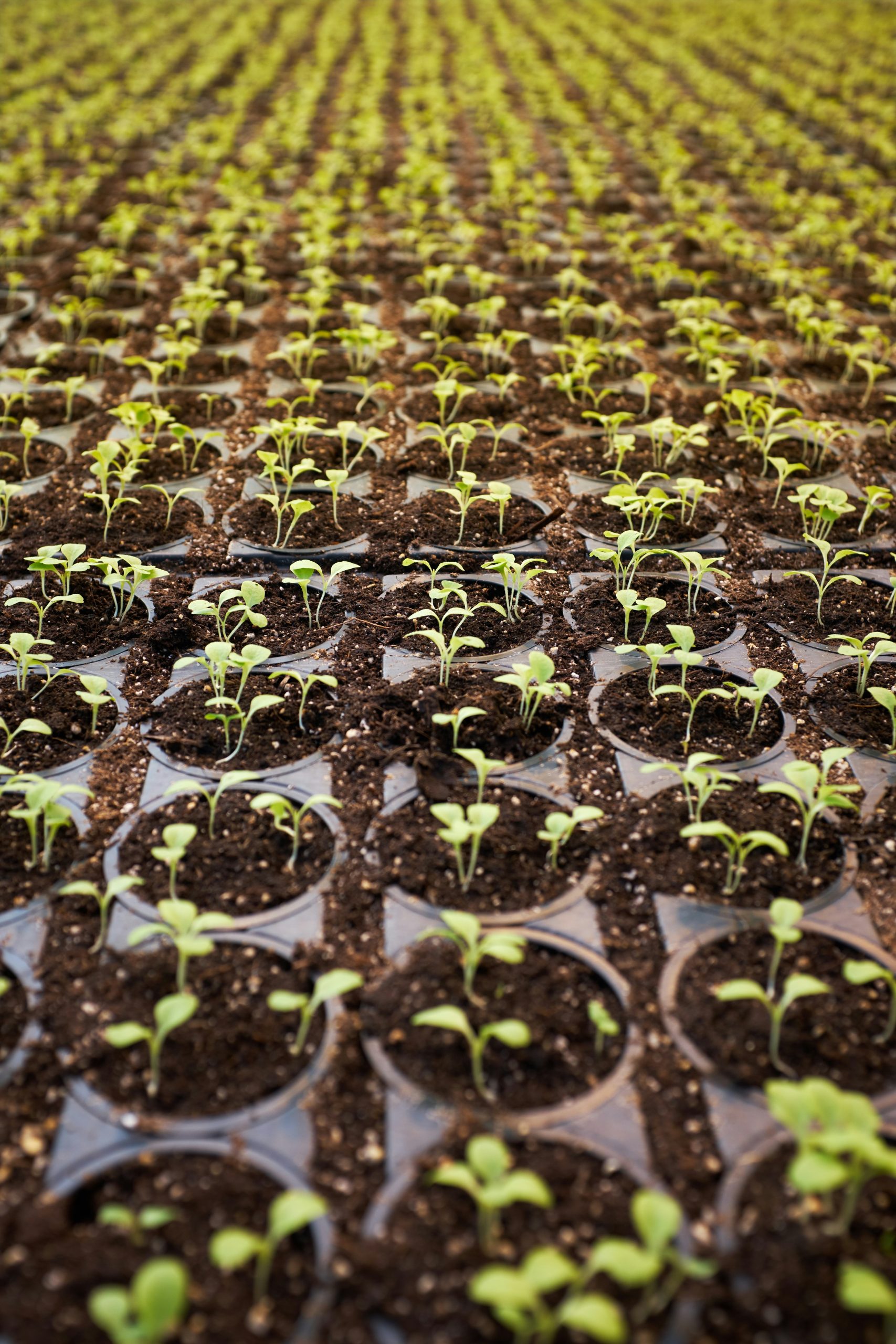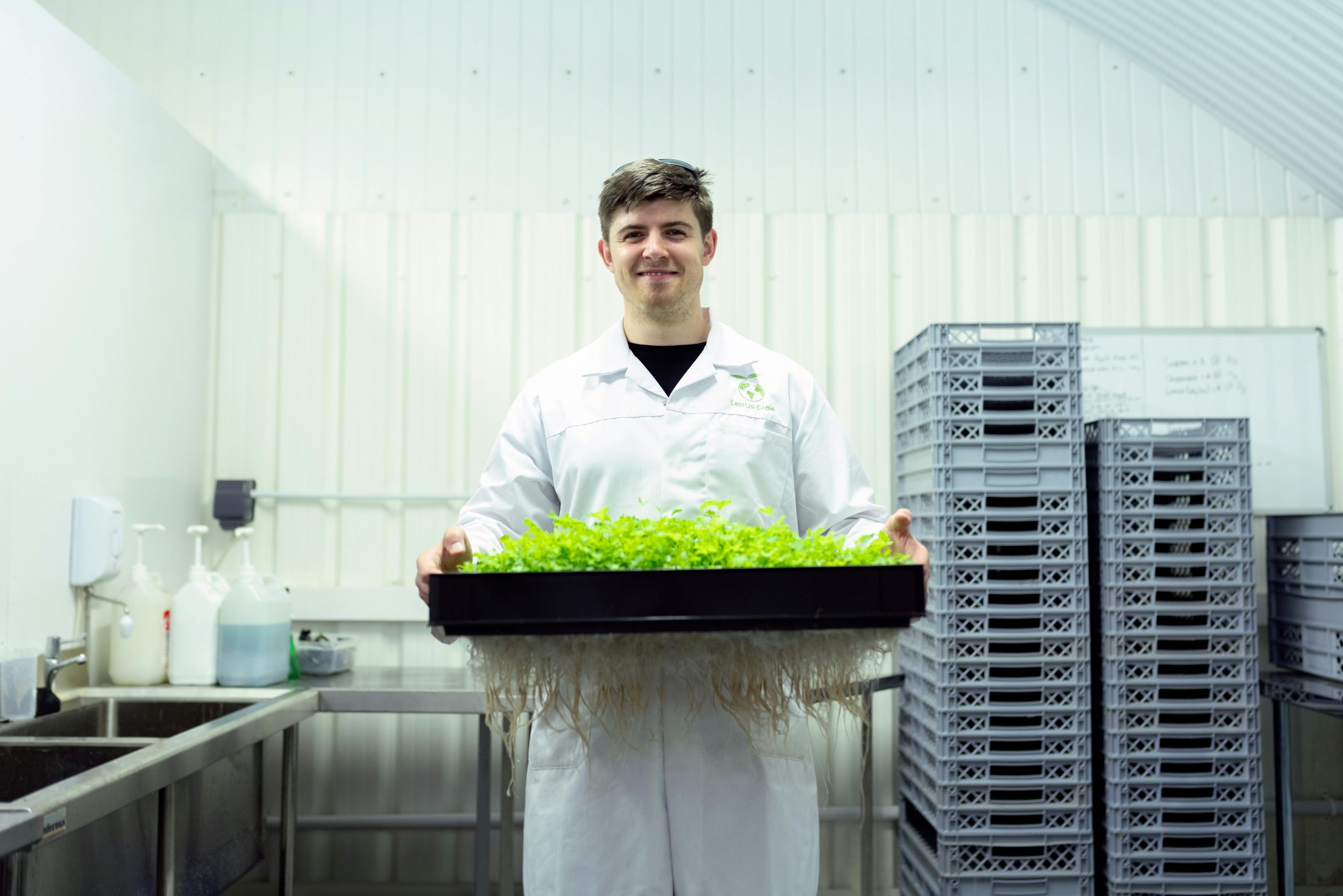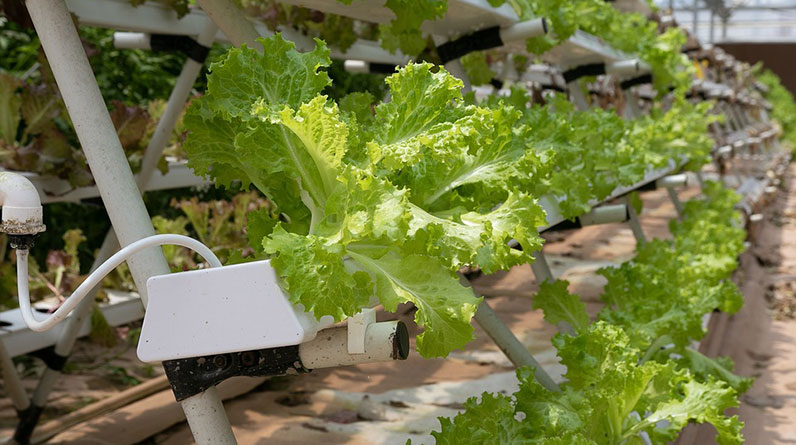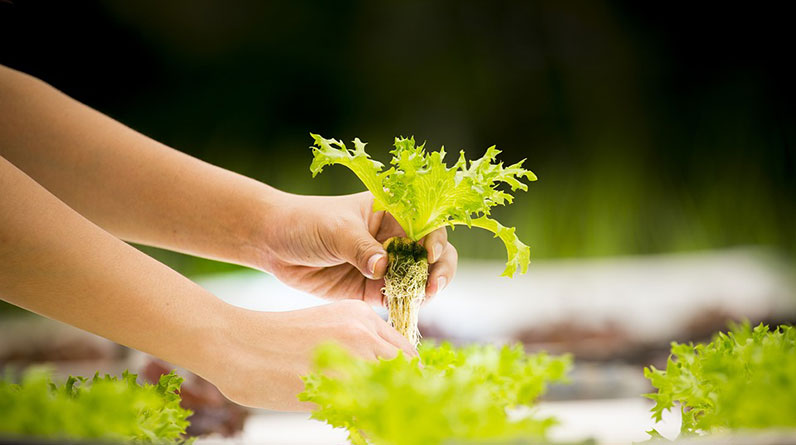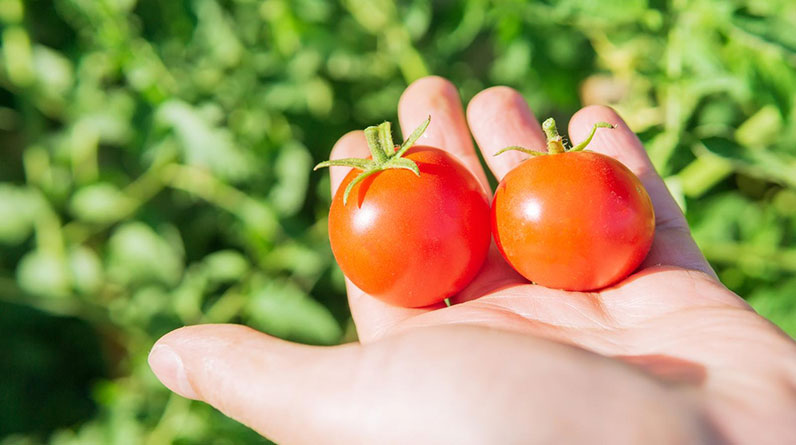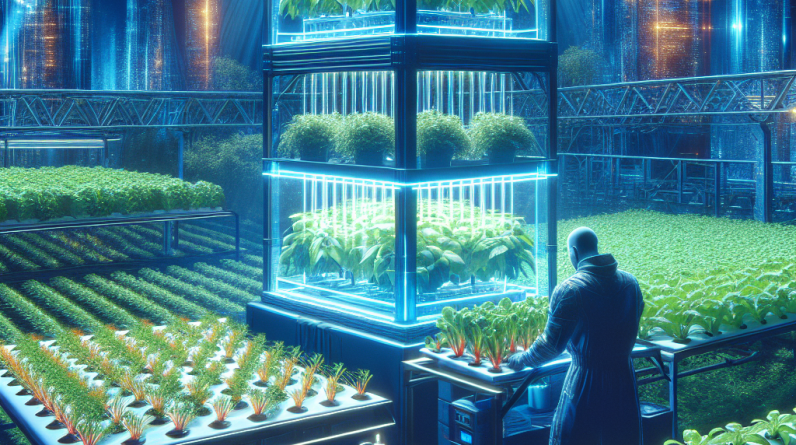
1. Understanding Hydroponic Systems 2. Selecting the Right Vegetables for Hydroponics 3. Optimal Lighting for Your Hydroponic Vegetable Garden 4. Nutrient Management Strategies 5. Maintaining Proper pH Levels 6. Controlling Temperature and Humidity 7. Pest and Disease Prevention 8. Efficient Water Usage and Recycling 9. Monitoring and Automation Technology 10. Planning for Sustainable Success in 2025
Welcome to the ultimate guide on creating and maintaining a thriving hydroponic vegetable garden in 2025. Whether you’re a seasoned gardener or just starting out, understanding the essentials of hydroponic gardening can transform your food-growing experience. The key to success lies in mastering each component, from system setup to plant care. Today, Iâll share 10 effective tips that will help you optimize your hydroponic vegetable garden, ensuring abundant harvests all year round.
1. Understanding Hydroponic Systems
Types of Hydroponic Systems
When embarking on your hydroponic journey, choosing the right system is foundational. Common types include Nutrient Film Technique (NFT), Deep Water Culture (DWC), and Ebb and Flow (Flood and Drain). Each offers unique advantages depending on your space, budget, and the vegetables you wish to grow.
For example, DWC systems are excellent for leafy greens like lettuce and spinach, providing constant oxygen and nutrients. NFT setups work well for small, fast-growing plants, while Ebb and Flow systems suit larger vegetables like tomatoes and peppers.
In 2025, advances in system design focus on automation and energy efficiency, making it easier for beginners to start with minimal hassle. Understanding these options helps you tailor your hydroponic vegetable garden for maximum yield.
Setting Up Your Hydroponic System
Proper setup is crucial for a successful hydroponic vegetable garden. Choose a location with stable conditions, access to power, and plenty of light. Ensure your containers or channels are sturdy and leak-proof, and plan for easy access to maintenance points.
Invest in quality pumps, timers, and aerators to maintain consistent operation. In 2025, many growers are adopting smart systems with IoT sensors that monitor nutrient levels, pH, and environmental conditions remotely, saving time and improving precision.
Starting with a small, manageable system allows you to learn and adapt before scaling up your hydroponic garden. Remember, a well-set system directly correlates with healthy plants and abundant harvests.
2. Selecting the Right Vegetables for Hydroponics
Best Vegetables for 2025 Hydroponic Gardens
Not all vegetables thrive equally in a hydroponic environment. Leafy greens such as lettuce, kale, and Swiss chard remain favorites due to their rapid growth and adaptability. Tomatoes, cucumbers, and peppers also perform well with adjustments to nutrient delivery and support structures.
Research indicates that in 2025, vertical farming techniques and hybrid setups are expanding the range of vegetables you can grow hydroponically, including strawberries and zucchinis. Choose crops suited to your space and climate for optimal results.
To get the best yield, select high-yield, fast-growing vegetables initially, then experiment with other crops as you gain experience. Your choices impact not just your harvest but the overall health of your hydroponic vegetable garden.
Growing Tips for Healthy Plants
Start with high-quality seeds or seedlings specifically designed for hydroponic systems. Proper spacing and support are key to preventing overcrowding and promoting airflow. Regularly check plant health and watch for early signs of pests or diseases.
Incorporate crop rotation and companion planting strategies to reduce pest issues naturally. Using organic bio-fertilizers can enhance plant resilience, especially in small-scale setups.
Sound watering and nutrition cycles are vital, ensuring your vegetables remain healthy and productive in the controlled environment of a hydroponic vegetable garden.
3. Optimal Lighting for Your Hydroponic Vegetable Garden
Choosing the Right Grow Lights
Lighting is a cornerstone of successful hydroponic gardening, especially indoors. In 2025, LED grow lights have become more efficient, affordable, and customizable. They provide the spectrum needed for plant growth while minimizing energy costs.
Consider your crop type when selecting lights. Vegetables like leafy greens prefer blue light, while flowering crops such as tomatoes need a mix of red and blue wavelengths. Adjustable light height and spectrum make it easier to optimize growth stages.
Investing in smart lighting controls that synchronize with your plant’s needs can dramatically improve yields and reduce power consumption. Proper lighting ensures robust growth in your hydroponic vegetable garden regardless of weather or season.
Light Schedule and Duration
Most vegetables require 12-16 hours of light daily, depending on the growth phase. For example, seedlings need gentler light, while mature plants thrive with extended exposure. In 2025, automated timers and sensors help maintain consistent lighting schedules.
Maintaining a stable light cycle supports photosynthesis and healthy development. Avoid light leaks or interruptions, which can cause stress or abnormal growth patterns.
Experimenting with light duration based on plant responses can help you fine-tune your system for maximum productivity and flavor in your hydroponic vegetable garden.
4. Nutrient Management Strategies
Understanding Nutrient Solutions
Hydroponic plants depend entirely on nutrient solutions for their minerals and vitamins. In 2025, the focus is on precise nutrient formulations tailored for each vegetable type to optimize growth and flavor.
Ensure your nutrient mix contains the correct balance of nitrogen, phosphorus, potassium, and micronutrients. Regular testing and adjustment are essential, especially as plants progress through different stages.
Many growers are turning to automated dosing systems that deliver nutrients accurately and consistently. This not only saves time but reduces waste and improves plant health.
Customizing Nutrients for Better Yields
Tailoring nutrient solutions varies by crop. Leafy greens generally need higher nitrogen levels, while fruiting vegetables benefit from increased potassium and phosphorus. Monitoring plant responses helps to refine these ratios.
In 2025, integrating sensors that monitor nutrient uptake allows for real-time adjustments, leading to healthier plants and tastier produce. Keep records of your adjustments to identify the best formula for your specific setup.
Consistent nutrient management is a cornerstone of a successful hydroponic vegetable garden and vital for achieving high yields and quality produce.
5. Maintaining Proper pH Levels
The Importance of pH Control
Maintaining the correct pH (typically between 5.5 and 6.5 for most vegetables) is critical for nutrient absorption. In 2025, digital pH meters with calibration options help maintain accuracy and ease of use.
Once pH levels drift outside the optimal range, plant growth slows, and deficiencies or toxicities can develop. Regular testing at least once a week ensures stability in your hydroponic vegetable garden.
Adjustments are made with pH up or pH down solutions, which should be added gradually to prevent swings. Keep detailed logs of pH levels for troubleshooting and future reference.
Preventing pH Fluctuations
Sudden pH swings often stem from tap water inconsistencies or nutrient imbalances. Using filtered or rainwater can reduce variable inputs. Always add nutrients after adjusting pH to avoid unexpected shifts.
In 2025, integrating automated pH sensors that communicate with your control system allows for instant corrections, ensuring your hydroponic vegetable garden remains in optimal conditions.
Consistent pH management enhances nutrient uptake, plant health, and ultimately, your harvest quality.
6. Controlling Temperature and Humidity
Ideal Climate Conditions for 2025
Most vegetables grow best in temperatures between 65-75°F (18-24°C) with humidity levels around 50-70%. Maintaining these ranges in your hydroponic vegetable garden prevents plant stress and disease.
In 2025, climate control technology such as smart thermostats, dehumidifiers, and fans makes it easier to sustain stable conditions indoors or in controlled environments.
Monitoring tools that track temperature and humidity enable proactive adjustments, reducing the risk of mold, pests, and inconsistent growth.
Strategies for Stable Environment
Using insulation, blackout curtains, and exhaust systems can help buffer external temperature fluctuations. Consistent environment control minimizes plant shock and promotes steady production.
In addition, choosing the right timing for lighting, irrigation, and ventilation saves energy and creates an optimal microclimate for your hydroponic vegetable garden.
Keeping environmental parameters stable is a key factor in achieving a productive and sustainable hydroponic garden setup in 2025.
7. Pest and Disease Prevention
Natural Pest Control Methods
Although hydroponic systems reduce soil-borne pests, airborne insects and diseases can still pose problems. Using biological controls like beneficial insects or organic sprays keeps the environment safe for plants and humans.
In 2025, integrated pest management (IPM) strategies include regular inspections, sticky traps, and targeted interventions to prevent outbreaks without relying heavily on chemicals.
Maintaining cleanliness and proper airflow minimizes pest habitats, creating a healthier space for your hydroponic vegetable garden to flourish.
Monitoring for Signs of Problems
Early detection is vital. Look out for discolored leaves, abnormal growth, or pests on plant surfaces. Using magnification tools can help identify issues before they spread.
Incorporate digital monitoring systems in 2025 that alert you to temperature, humidity, or pest issues, allowing quick responses.
Creating a pest-resistant environment is vital for the consistent success of your hydroponic vegetable garden, ensuring healthy plants and high-quality produce.
8. Efficient Water Usage and Recycling
Water Conservation Techniques
Hydroponic systems naturally use less water than traditional soil-based gardening. In 2025, closed-loop systems recycle nutrient-rich water, reducing waste and environmental impact.
Implementing rainwater harvesting and filtration systems can further enhance water efficiency. Smart sensors can detect water levels and nutrient concentrations, optimizing resource use.
Saving water not only benefits the environment but also decreases operating costs, making your hydroponic vegetable garden more sustainable and profitable.
Maintaining Water Quality
Regularly checking for pathogens or mineral buildup prevents blockages and maintains system health. Changing water periodically ensures vital nutrients are replenished.
In 2025, the adoption of IoT-enabled water management tools helps automate these processes, ensuring your garden runs smoothly and efficiently.
Proper water management supports robust plant growth and high yields in your hydroponic vegetable garden.
9. Monitoring and Automation Technology
Smart Sensors and Control Systems
Technology plays a big role in modern hydroponic gardening. In 2025, growers leverage smart sensors that monitor pH, temperature, humidity, and nutrient levels, providing real-time data.
Automation systems can adjust lighting, nutrient dosing, and environmental controls automatically, saving time and increasing accuracy.
Integrating these tools simplifies managing complex parameters, enabling even beginner gardeners to succeed in their hydroponic vegetable garden.
Data-Driven Optimization
Recording system data helps identify patterns and optimize conditions for maximum yield. Machine learning algorithms are increasingly used to refine control strategies.
In 2025, accessing these insights through user-friendly apps empowers growers to make informed decisions quickly.
This technological edge ensures your hydroponic vegetable garden remains productive, efficient, and sustainable over time.
10. Planning for Sustainable Success in 2025
Designing for Long-Term Sustainability
Think beyond immediate harvestsâplan your hydroponic vegetable garden for durability and eco-friendliness. Use biodegradable components and renewable energy sources when possible.
Crop rotation and modular designs allow scalability and adaptability, crucial in a rapidly evolving industry like hydroponics in 2025.
Sharing knowledge and collaborating with the community helps refine best practices and stay ahead of trends, ensuring long-term success.
Keeping Up with 2025 Trends
In 2025, sustainability isnât just a trendâit’s a necessity for successful hydroponic vegetable gardens. Incorporate renewable energy, eco-friendly materials, and organic inputs.
Stay informed through industry reports, forums, and experiments to continuously improve your gardening techniques.
Planning thoughtfully today guarantees a productive, eco-conscious, and profitable hydroponic vegetable garden tomorrow.
Frequently Asked Questions
1. What is a hydroponic vegetable garden?
A hydroponic vegetable garden is a soil-less growing system where plants grow with their roots immersed in nutrient-rich water. This method allows for efficient use of space and resources, yielding faster growth and higher productivity.
2. How do I start a hydroponic vegetable garden at home?
Begin by selecting a suitable system like DWC or NFT, choose vegetables compatible with hydroponic growing, set up your environment with appropriate lighting and climate control, and then carefully manage nutrients and water quality as you monitor plant health.
3. What are the benefits of a hydroponic vegetable garden?
Benefits include faster plant growth, higher yields, less water usage, fewer pests and diseases, and the ability to grow vegetables indoors or in limited spaceâperfect for urban or small-scale setups.
4. How can I ensure the success of my hydroponic vegetable garden in 2025?
Success depends on proper system setup, regular monitoring of pH and nutrient levels, optimal lighting, and environmental control. Utilizing modern technology and staying updated with industry trends further boosts your chances of a bountiful harvest.
5. Where can I learn more about hydroponic vegetable gardening?
Many resources exist online, including forums, YouTube channels, and expert blogs. Look for updates pertinent to 2025 technological advances and best practices for sustainable and efficient gardening.
Conclusion
Creating a successful hydroponic vegetable garden in 2025 requires understanding system choices, crop selection, lighting, nutrition, and environmental controls. By following these 10 effective tips, you can optimize your setup for maximum yields, sustainability, and enjoyment. The sport of hydroponic gardening continues to evolve, and embracing the latest innovations ensures your garden remains productive and rewarding for years to come. Remember, a well-planned hydroponic vegetable garden is not just about growing foodâit’s about cultivating a sustainable future.



